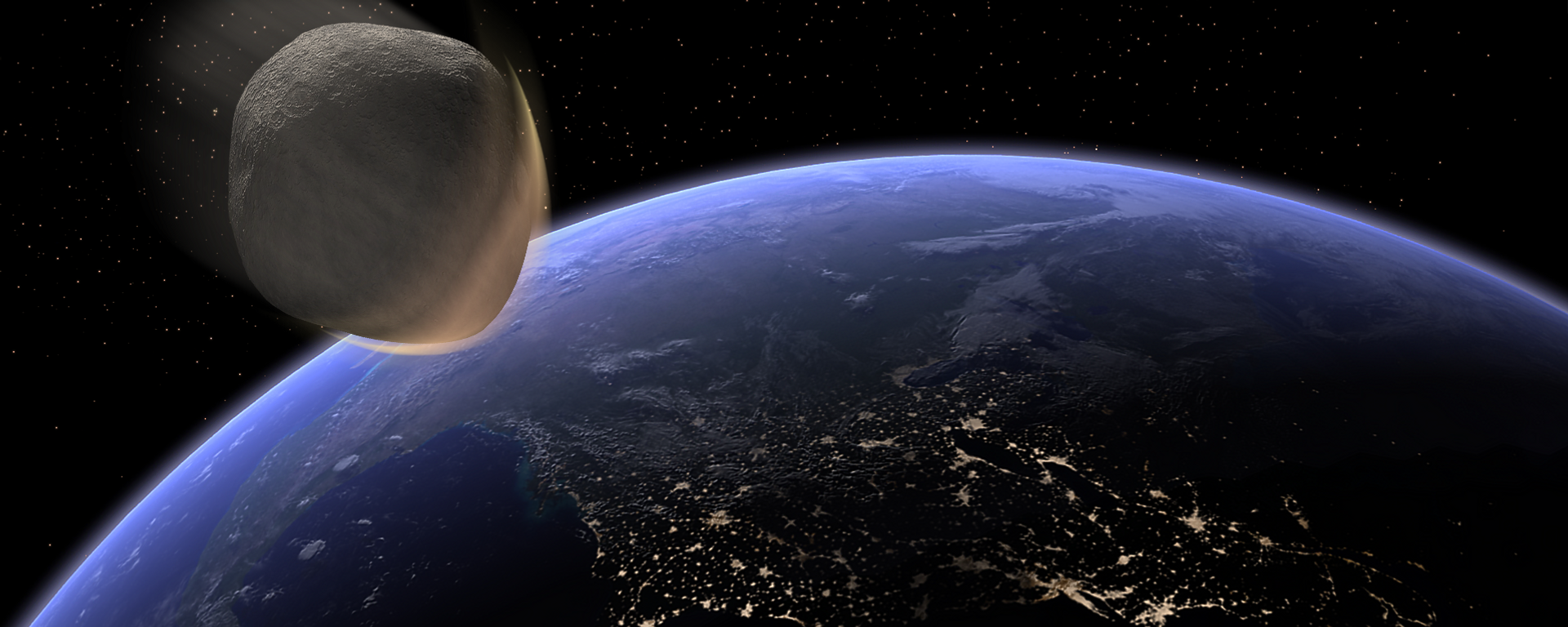Two-Year 'Global Photosynthesis Shutdown' Killed Dinosaurs 66 Million Years Ago
Subscribe
Scientists studying a rare fossil deposit dating to the time immediately after a massive asteroid struck the Earth, triggering the Cretaceous–Paleogene extinction event that killed the dinosaurs, have uncovered new details about the sequence of events that destroyed 75% of all life on our planet.
When a six-mile-wide asteroid struck the Earth 66 million years ago, it left a massive impact crater over 100 miles wide, today called the Chicxulub crater in eastern Mexico. Since the late 20th century, the impact event has been triangulated as the decisive event triggering the Cretaceous–Paleogene extinction, which killed three-quarters of all life on the planet, bringing about the end of the era of the dinosaurs and the beginning of mammalian domination of our world.
However, the exact mechanisms by which the asteroid impact caused such mass death remain largely unknown, with some theories holding that rapid acidification of the seas combined with worldwide forest fires and volcanic events choked out most life in the years after the impact. A new study has found that the real killer was likely ultra-fine dust particles thrown into the atmosphere, blotting out the sun and choking the world’s plants.
The study, published on Monday in Nature Geoscience, looked at the Tanis fossil site in North Dakota, which has yielded numerous important fossil finds from the late Cretaceous era and early Paleocene - that is, the eras that came before and after the Chicxulub asteroid impact.

Chicxulub Crater, Mexico
© Photo : Wikipedia
In the fossilized sediments of what at the time of the impact was a lake, scientists found something different than they expected. Where they thought they would find sulfur, and thus evidence of poisonous gases, or soot from fires, they instead found a layer of ultra-fine silicate powder. The particles were so tiny, around 0.8 to 8.0 micrometers, that they could have hung in the atmosphere for up to 15 years.
Ozgur Karatekin, a researcher at the Royal Observatory of Belgium and one of the co-authors of the study, said such a volume of dust particles in the atmosphere "totally shut down photosynthesis" in plants for at least a year, causing a "catastrophic collapse" of life.
“Photosynthesis shutting down for almost two years after impact caused severe challenges (for life),” said lead study author and planetary scientist Cem Berk Senel, a postdoctoral researcher at the Royal Observatory of Belgium. “It collapsed the food web, creating a chain reaction of extinctions.”
In addition, the dust would have reflected sunlight, triggering a dramatic cooling of the Earth’s climate by as much as 15 degrees Celsius - a phenomenon that once bore the sole blame for the dinosaurs’ extinction.
They concluded that the worst effects would have come immediately after the impact, which vaporized the seafloor of the Gulf of Mexico to create the silicate dust. After about two years, much of the dust would have settled and some photosynthesis would have begun again, but the damage by then would have already been done.
The extinction event included essentially all non-avian dinosaurs, as well as marine creatures like plesiosaurs, ammonites, and other staples of prehistoric Earth. In their absence, mammals proliferated dramatically, undergoing rapid evolution to fill new niches around the world, creating creatures such as horses, primates, and whales, and the avian dinosaurs that survived the extinction began to evolve into modern-day birds.
Sean Gulick, a geophysicist at the University of Texas at Austin who wasn’t involved in the research, told US media that by studying the Cretaceous–Paleogene extinction event 66 million years ago, we can better understand what scientists have come to call the threat of the Anthropocene Extinction, which may erase the human civilization.
"Maybe we can better predict our own mass extinction that we're probably in the middle of," Gulick said.





